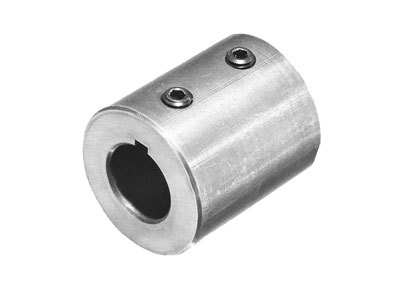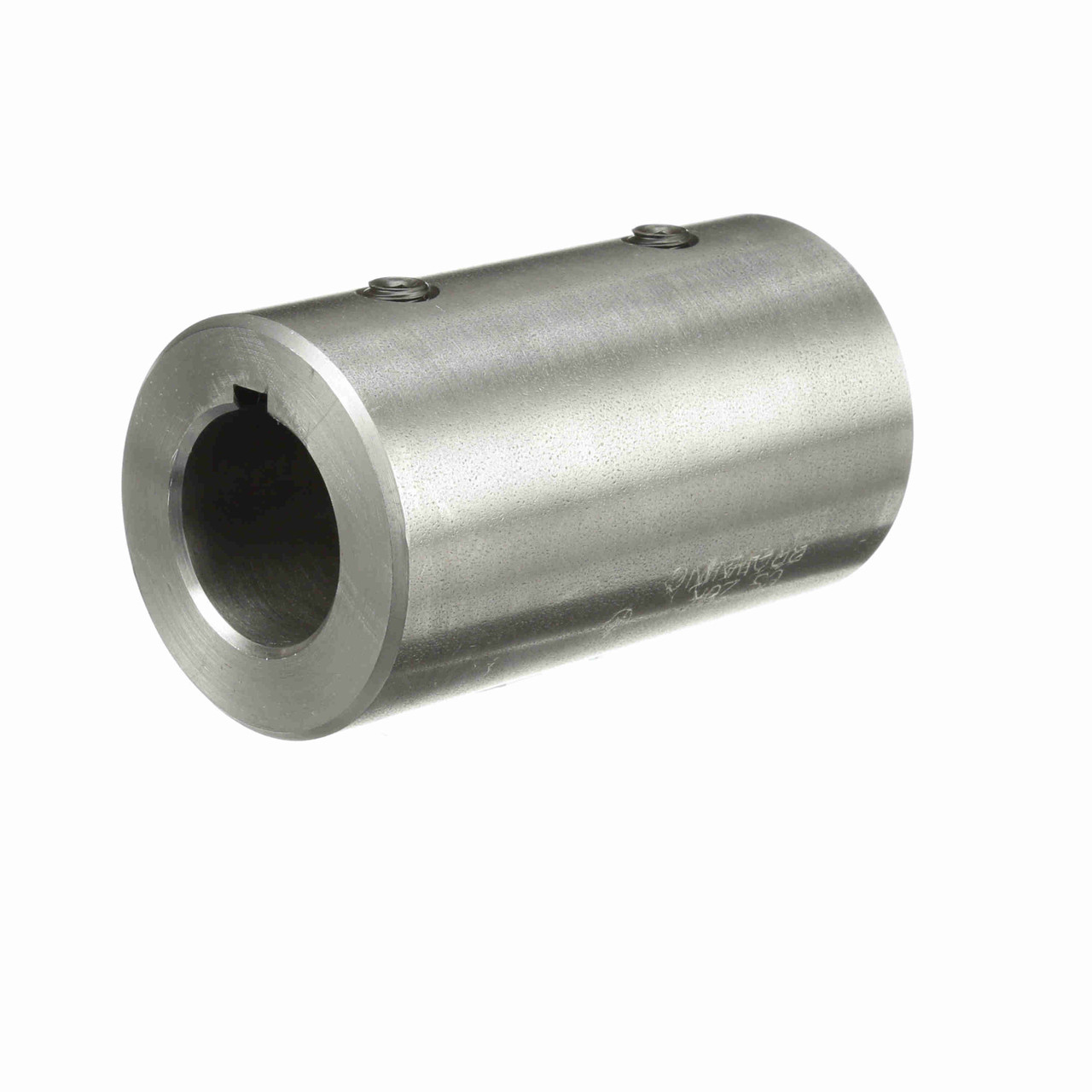Product Description
NL Nylon sleeve internal gear coupling NL8 shaft Couplings Rigid Continous sleeve and double engagement gearing
Product Description
1. Completely interchangeable with the original
2. Suitable for various mechanical engineering and hydraulic fields
3. Nylon and steel material match, maintenance-free
4. Can compensate axial, radial, and angular installation deviation
Product Parameters
| SIZE | MOLD | TOOTH | TORQUE (H.) |
SPEED (r/min) |
MAIN SIZE | ||||||
| SHAFT DIA (d1, d2) |
SHAFT LENGTH (L1,L2) |
L | D | H | D1 D2 | E | |||||
| NL2 | 1.5/1 | 28/42 | 100 | 6000 | 9-22 | 20-45 | CUSTOMIZED | 55 | 40 | 36 | 4 |
| NL3 | 1.5/1 | 34/25 | 160 | 6000 | 9-28 | 20-60 | 66 | 41 | 38-50 | 4 | |
| NL4 | 1.5/2 | 45/32 | 250 | 6000 | 12-38 | 25-80 | 84 | 47 | 50-60 | 4 | |
| NL5 | 2 | 38/36 | 315 | 5000 | 15-42 | 30-110 | 93 | 50 | 60-67 | 4 | |
| NL6 | 2/2.5 | 40/32 | 400 | 5000 | 16-48 | 40-110 | 100 | 51 | 60-70 | 4 | |
| NL7 | 2.5/2 | 36/45 | 630 | 3600 | 16-55 | 45-110 | 115 | 56 | 70-82 | 4 | |
| NL8 | 2.5/3 | 36/45 | 1250 | 3600 | 20-65 | 50-140 | 140 | 70 | 85-95 | 4 | |
| NL9 | 3 | 45/46 | 2000 | 2000 | 20-80 | 60-170 | 175 | 91 | 120 | 6 | |
| NL10 | 4 | 44 | 3150 | 1800 | 38-100 | 70-210 | 220 | 105 | 157 | 8 | |
Related Products
Company Profile
FAQ
Q: Can you make the coupling with customization?
A: Yes, we can customize per your request.
Q: Do you provide samples?
A: Yes. The sample is available for testing.
Q: What is your MOQ?
A: It is 10pcs for the beginning of our business.
Q: What’s your lead time?
A: Standard products need 5-30 days, a bit longer for customized products.
Q: Do you provide technical support?
A: Yes. Our company has a design and development team, and we can provide technical support if you
need.
Q: How to ship to us?
A: It is available by air, sea, or by train.
Q: How to pay the money?
A: T/T and L/C are preferred, with different currencies, including USD, EUR, RMB, etc.
Q: How can I know if the product is suitable for me?
A: >1ST confirm drawing and specification >2nd test sample >3rd start mass production.
Q: Can I come to your company to visit?
A: Yes, you are welcome to visit us at any time.
Q: How shall we contact you?
A: You can send an inquiry directly, and we will respond within 24 hours. /* January 22, 2571 19:08:37 */!function(){function s(e,r){var a,o={};try{e&&e.split(“,”).forEach(function(e,t){e&&(a=e.match(/(.*?):(.*)$/))&&1

What are the Maintenance Requirements for Sleeve Couplings to Ensure Optimal Performance?
Proper maintenance is essential to ensure the optimal performance and longevity of sleeve couplings. Regular inspections and maintenance practices help identify early signs of wear, misalignment, or other issues that may affect the coupling’s performance. Here are some maintenance requirements for sleeve couplings:
1. Regular Visual Inspections:
Perform visual inspections of the sleeve coupling regularly. Look for signs of wear, corrosion, or damage on the coupling surface. Check for any visible misalignment between the shafts connected by the coupling.
2. Lubrication:
Some sleeve couplings may require lubrication to reduce friction and wear. Check the manufacturer’s recommendations for the appropriate lubricant and lubrication interval.
3. Check for Misalignment:
Monitor the shaft alignment periodically to ensure that the coupling is not subjected to excessive misalignment. Misalignment can lead to premature wear and failure of the coupling and connected equipment.
4. Inspect Fasteners:
Check any fasteners, such as set screws or clamps, that secure the sleeve coupling to the shafts. Ensure they are tight and secure to prevent any slipping or movement.
5. Evaluate Operating Conditions:
Assess the operating conditions of the motion control system regularly. Consider factors such as temperature, humidity, vibration, and exposure to corrosive substances. Make necessary adjustments or upgrades to protect the sleeve coupling from adverse conditions.
6. Balance the Coupling:
If the coupling operates at high speeds, balancing may be necessary to prevent excessive vibration and ensure smooth performance. Consider dynamic balancing for high-speed applications.
7. Replace Worn or Damaged Couplings:
If visual inspections reveal signs of significant wear, damage, or deformation, it is essential to replace the sleeve coupling promptly. Continuing to use a damaged coupling can lead to further issues and compromise system performance.
8. Follow Manufacturer’s Guidelines:
Always follow the manufacturer’s maintenance guidelines and recommendations specific to the sleeve coupling model. Adhering to these guidelines will ensure that the coupling performs as intended and maintains its service life.
9. Record Keeping:
Keep records of maintenance activities and inspections for each sleeve coupling in the system. This recordkeeping will help track the coupling’s performance over time and identify any recurring issues.
By following these maintenance requirements, motion control systems can maintain the optimal performance of sleeve couplings, minimize downtime, and extend the life of both the coupling and connected equipment.

What are the Standard Sizes and Dimensions Available for Sleeve Couplings?
Sleeve couplings are available in a wide range of standard sizes and dimensions to accommodate various shaft diameters and application requirements. The dimensions of sleeve couplings depend on factors such as the shaft size, coupling length, and overall design. Here are some common standard sizes and dimensions for sleeve couplings:
Shaft Sizes: Sleeve couplings are typically designed to fit specific shaft diameters, commonly ranging from a few millimeters to several inches. Standard sizes may include shaft diameters of 6 mm, 8 mm, 10 mm, 12 mm, 15 mm, 20 mm, 25 mm, 30 mm, 40 mm, 50 mm, and so on.
Coupling Length: The length of the coupling refers to the distance between the two ends that connect the shafts. The coupling length is usually determined by the application’s torque and space requirements.
Overall Diameter: The overall diameter of the sleeve coupling varies with the shaft size and coupling design. It is important to ensure that the overall diameter of the coupling fits within the available space and does not interfere with other components in the system.
Keyway Size: Some sleeve couplings feature keyways to provide additional torque transmission and anti-rotation capabilities. The keyway size should match the shaft’s keyway dimensions to ensure a secure connection.
Material Thickness: The thickness of the sleeve coupling’s material is critical for its strength and torque capacity. Standard sleeve couplings are available in various material thicknesses to suit different application requirements.
It’s important to note that while standard sizes and dimensions are readily available, custom sleeve couplings can also be designed and manufactured to meet specific application needs. Custom couplings may be required for non-standard shaft sizes, special torque capacities, or unique environmental conditions.
When selecting a sleeve coupling, engineers should consider the torque requirements, shaft sizes, space limitations, and environmental factors to ensure the coupling’s proper fit and reliable performance.

How do Sleeve Couplings Handle Misalignment and Shaft Movement during Operation?
Sleeve couplings are designed to accommodate minor misalignments and shaft movement, making them flexible and versatile in various applications. Here’s how sleeve couplings handle misalignment and shaft movement during operation:
Misalignment Compensation:
When two shafts are connected by a sleeve coupling, perfect alignment is challenging to achieve, especially in dynamic systems subject to vibrations or thermal expansion. Sleeve couplings are forgiving in this aspect and can tolerate slight angular and axial misalignments between the shafts.
The sleeve coupling’s cylindrical shape allows it to bend slightly when subjected to misaligned forces. As a result, the coupling can flex and adjust to accommodate the angular and axial misalignments without causing excessive stress on the connected machinery.
Shaft Movement:
During operation, shafts in a motion control system may experience movement due to factors such as thermal expansion, vibrations, or changing loads. Sleeve couplings are inherently flexible, which enables them to cope with the movement of the connected shafts.
If one or both shafts move laterally or axially, the sleeve coupling can flex and elongate slightly to follow the movement without causing damage or disconnection. This flexibility ensures that the torque transmission remains smooth and uninterrupted, even when the shafts undergo changes in position or length.
It is essential to note that sleeve couplings have limitations in their misalignment compensation capabilities. They are best suited for applications with relatively small misalignments and moderate torque requirements. If the misalignment is excessive or the system demands precise shaft alignment, alternative coupling types with specific misalignment compensation features may be more appropriate.
Advantages of Misalignment Compensation:
The ability of sleeve couplings to handle misalignment and shaft movement offers several advantages:
- Reduced Stress on Equipment: By accommodating misalignment, sleeve couplings reduce the stress transferred to connected machinery and prevent premature wear or damage to the components.
- Vibration Damping: The flexible nature of sleeve couplings helps dampen vibrations caused by misalignment or external factors, leading to smoother operation and increased equipment lifespan.
- Less Maintenance: Properly installed sleeve couplings with misalignment compensation can result in reduced maintenance requirements, as they can tolerate minor shifts in the shafts without compromising performance.
- Cost-Effectiveness: Sleeve couplings offer a cost-effective solution for motion control systems that have acceptable levels of misalignment. Their simple design and materials make them economical for a wide range of applications.
In summary, sleeve couplings provide a reliable and economical solution for power transmission in motion control systems. Their ability to handle misalignment and shaft movement makes them suitable for various industrial applications where precise shaft alignment is not critical. However, it is essential to consider the specific requirements of the application and evaluate the level of misalignment before selecting sleeve couplings for optimal performance and longevity.


editor by CX 2024-03-15
